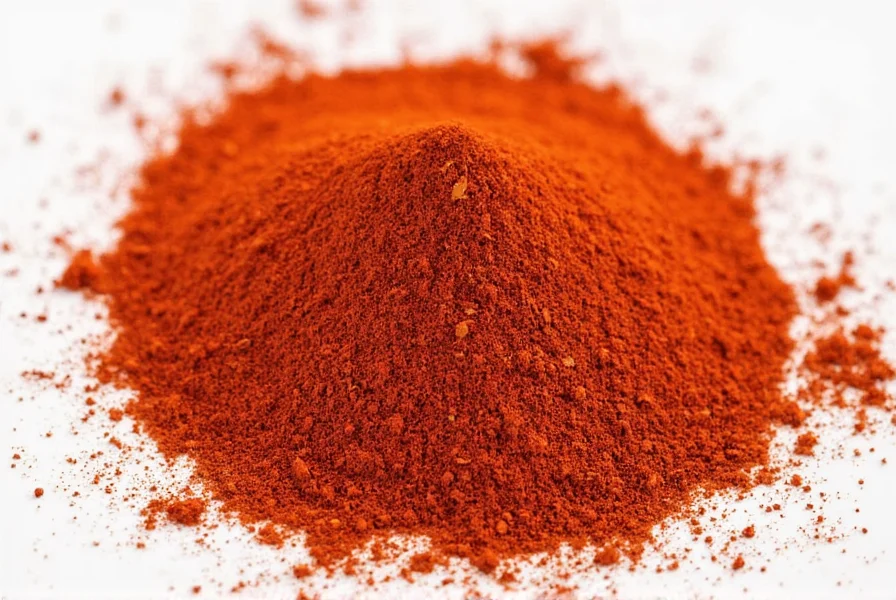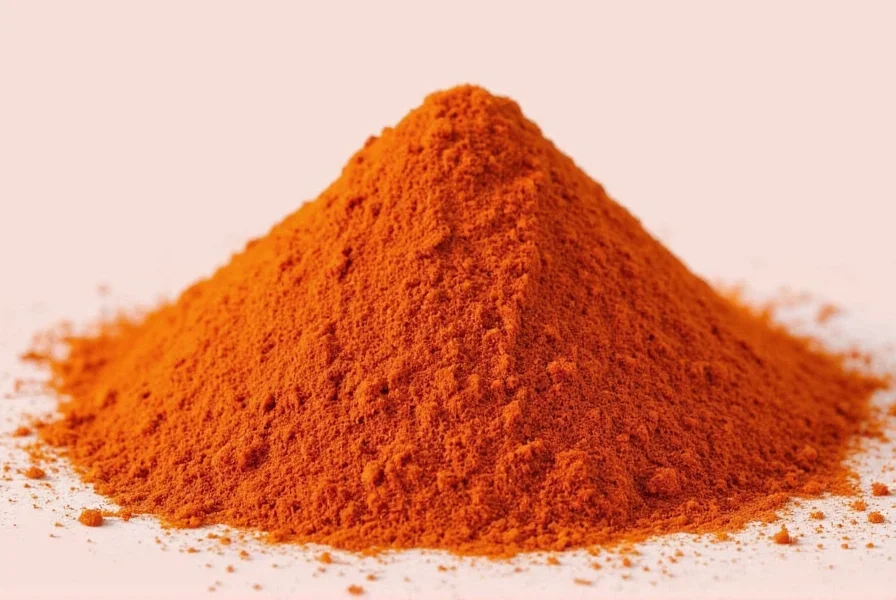Ground paprika is a vibrant red spice made from dried and ground sweet bell peppers or chili peppers. Used worldwide to add color and flavor to dishes, it ranges from mild and sweet to spicy hot depending on the pepper variety. This guide covers everything you need to know: types, uses, storage tips, health benefits, and how to choose the best paprika for your kitchen.

What Is Ground Paprika?
Ground paprika is made by drying and grinding red peppers. Unlike black pepper, it offers subtle heat or no heat at all, depending on the variety. Originating in Central America, it became a staple in Hungarian cuisine and now has global variations like Spanish smoked paprika and California sweet paprika.
Types of Ground Paprika
Each type has distinct flavor profiles and best uses:
| Type | Origin | Heat Level | Best Uses |
|---|---|---|---|
| Sweet Paprika | Hungary / USA | Mild | Deviled eggs, mashed potatoes, creamy sauces |
| Smoked Paprika (Pimentón) | Spain | Mild to Medium | Barbecue rubs, paella, stews, roasted meats |
| Hot Paprika | Hungary / Mexico | Medium to Hot | Chorizo, chili, spicy sauces, Mexican dishes |
Flavor Profile Guide
- Sweet Paprika: Earthy and fruity with zero heat. Ideal for adding color and mild flavor without spice.
- Smoked Paprika: Rich, smoky depth from wood-smoked peppers. Perfect for adding complexity to grilled foods and hearty dishes.
- Hot Paprika: Spicy kick with balanced sweetness. Use in dishes where you want noticeable heat.
5 Everyday Uses (Plus 1 Unexpected Trick)
- Roasted Vegetables: Toss carrots or sweet potatoes with olive oil and paprika before roasting for caramelized flavor.
- Chicken Rub: Mix with garlic powder, salt, and olive oil for a crispy, flavorful crust.
- Hummus Booster: Stir 1 tsp into hummus for vibrant color and warm undertones.
- Potato Enhancer: Sprinkle on roasted potatoes or mix into mashed potatoes for extra flavor.
- Chili Base: Add to tomato-based sauces for depth and color.
- Popcorn Seasoning: Melt butter with 1/2 tsp sweet paprika and drizzle over popcorn for a savory snack.
How to Choose the Best Ground Paprika
Label Checklist
- Pure ingredients: Only "paprika" listed (no fillers or additives)
- Origin: Hungarian or Spanish brands for authentic flavor profiles
- Color intensity: Vibrant red color indicates freshness
| Brand | Type | Flavor Profile | Best For | Price |
|---|---|---|---|---|
| McCormick | Sweet | Mild, versatile | Everyday cooking | $ |
| Pimentón La Vera | Smoked | Deep, woodsy smoke | Meat rubs, Spanish dishes | $$ |
| Kolonya | Sweet | Fruity, floral notes | European cuisine | $$ |
| La Costeña | Hot | Spicy with tang | Mexican dishes | $ |
Pro Cooking Tips
- Toast in oil: Heat 1 tsp paprika in 1 tbsp oil for 30 seconds to unlock aroma before adding other ingredients
- Add late: Stir into dishes during last 5 minutes of cooking to preserve flavor
- Balance with acid: Pair with lemon juice or vinegar to brighten earthy notes
- Finish with dusting: Sprinkle on finished dishes for visual appeal and fresh flavor
How to Store Ground Paprika
- Cool & dark: Keep away from stove, oven, or sunlight
- Airtight container: Transfer from original packaging to glass jar
- Label with date: Replace every 12-18 months for peak flavor

Frequently Asked Questions
What's the difference between sweet and smoked paprika?
Sweet paprika is made from dried sweet peppers with no smoking process, giving it mild, fruity notes. Smoked paprika (Pimentón) is made from peppers smoked over oak fires, creating a deep, woodsy flavor that works best in meat dishes and stews.
Can I substitute fresh peppers for paprika?
Not directly. 1 tsp ground paprika equals about 1/4 cup chopped fresh peppers, but paprika's concentrated flavor and color can't be fully replicated. Smoked paprika has no fresh pepper substitute due to its unique smoking process.
Why does paprika turn bitter when cooked?
Paprika burns easily at high heat. Always toast it in oil over medium-low heat for 30 seconds max, or add it near the end of cooking. Sweet paprika is more prone to bitterness than smoked varieties.
Is paprika healthy?
Yes! It's rich in vitamin A (from carotenoids), vitamin E, and antioxidants. Capsaicin in hot varieties may support metabolism. Smoked paprika contains additional compounds from the smoking process that offer unique health benefits.
How to tell if paprika has gone bad?
Check for dull color, weak aroma, or clumping. Properly stored paprika stays fresh 12-18 months. If it smells musty or lacks vibrancy, replace it.
Can I make paprika at home?
Yes! Dry red peppers completely, then grind in a spice mill. For smoked paprika, you'd need to smoke peppers first using a traditional smoker. Homemade versions won't match commercial consistency but work well for personal use.
Why is Hungarian paprika special?
Hungarian paprika benefits from ideal growing conditions and strict quality standards. It's graded into 8 categories based on heat and color intensity, with "Különleges" (Special Quality) being the highest grade for vibrant color and balanced flavor.
Does paprika contain capsaicin?
Only hot varieties contain significant capsaicin (the compound that creates heat). Sweet paprika has negligible amounts, while smoked paprika varies based on the pepper type used.
Why Ground Paprika Deserves a Place in Every Kitchen
From its vibrant color to its versatile flavor profile, ground paprika transforms ordinary dishes into culinary highlights. Whether you're adding smoky depth to stews or a sweet kick to roasted vegetables, this spice offers endless possibilities. Start with a quality sweet paprika, then explore smoked and hot varieties to unlock new dimensions in your cooking.










 浙公网安备
33010002000092号
浙公网安备
33010002000092号 浙B2-20120091-4
浙B2-20120091-4